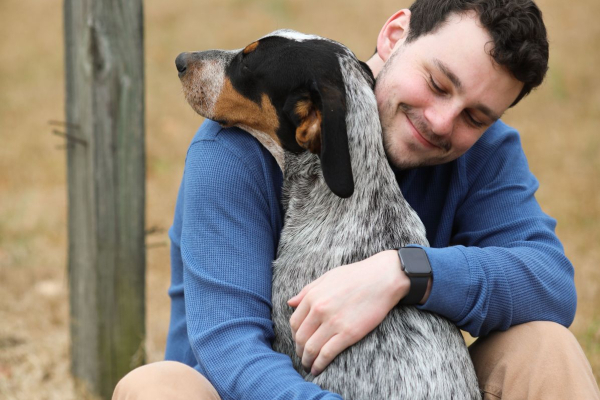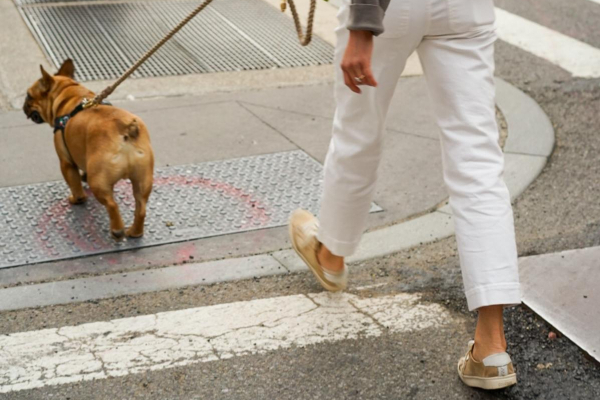In Part 1 of this series, we shared practical tips for teaching your cat or dog appropriate “office behavior” when you’re working from home.
What happens when you return to a job that’s outside your home? When you’re not around full-time, your pet won’t receive as much playtime, exercise, and the on-demand snuggles to which she has become accustomed.
When you’re not around full-time, your pet won’t receive as much playtime, exercise, and the on-demand snuggles to which she has become accustomed.
- Will your pet panic?
- Will both of you experience separation anxiety?
- How will you adjust to being apart all day?
When you are at home during your off-hours, will your pet cling to you 24/7, whining and scratching at the door while you’re taking a shower?
How can you gradually ease your pet into a routine that includes being left alone for much of the day?
Preparing your pet for the transition
Training your pet to be emotionally independent is similar to teaching her appropriate home-office behavior.
In our article on home-office training, we suggested that you not “reward” attention-seeking behavior (such as incessant vocalizing or plopping atop your keyboard) by petting or scolding your pet. Instead, provide her with activities that will keep her occupied and content.
In the same manner, you don’t want to unintentionally “reward” your pet for behaviors that may occur when you’re away from home, such as:
- pawing at windows and doors when you leave
- howling and whining
- chewing or destroying your personal possessions while you’re away
- soiling in the house
These behaviors are distress signals that your pet is feeling anxious or bored, and needs help learning to self-soothe.
If you know that you’ll soon be working outside the home, begin weaning your pet away from you now, and establish routines of what life will be like when you’re away.
Your pet needs practice regulating their emotions when they’re not by your side (or on your lap).

Step 1:
Start by restricting your pet’s access to you. Crate train your pet or set up a pet gate in an area where they can see you, but not be in physical contact with you.
Step 2:
After they’ve become comfortable with being physically apart but still having visual contact, train them to be alone. Have an active play session with your pet or take them for a long walk. After they’ve had a chance to release pent-up energy, put them in another room with a food puzzle or a favorite toy to keep them entertained. Close the door. Check on your pet regularly at first, gradually increasing the intervals of their time alone.
Step 3:
Help your pet get used to the idea of you being away by leaving home more frequently. Give them a chew toy or food puzzle to work on while you’re gone. Gradually increase the duration of your time away.
Whether you stay away from home for a few minutes or a few hours, focus on making every “goodbye” and “hello” consistently calm, casual, and positive. This will help your pet understand that your comings and goings are normal.
Step 4:
Gradually ease your pet out of your work-from-home routines. Pets are very routine oriented can be demanding if you abruptly change their regular schedule. To help them acclimate to a new schedule, try this: If you feed your pet every morning at 8 a.m., change that up by feeding them at 7 or 9 a.m. This will help them learn to cope with random deviations in their schedule or move to a new schedule altogether.
Step 5:
Don’t take your pet outside to play or on a walk during hours you will normally be at work. Your goal here is to help your pet get used to new routines.
Step 6:
If you have nearby neighbors, let them know that you’re returning to work. Ask your neighbors to listen for signs of distress, such as incessant barking, and to let you know what they observe so you can adjust accordingly. Or consider some of the new pet-cams so you can keep an eye on how your pet is adjusting to your new schedule.
Step 7:
Engage the services of a neighbor, friend, or professional to pop in a couple of times throughout the workday to walk your pet or to take your pet on a playdate.
If your pet has trouble adjusting
Getting started now will help make your pet’s adjustment to your new routine go more smoothly. A gradual transition to more independence, instead of an abrupt change, will help keep your relationship with your pet healthy and her quality of life in a positive realm.
If the transition back to working away from home does not go well, here are six suggestions to consider:

1. Doggie daycare
This alternative can help energetic dogs who enjoy the companionship of other dogs. Look for a facility that provides space to run and play and includes a variety of activities to physically and mentally stimulate your dog.
2. In-home dog sharing
Some dogs don’t thrive in doggie daycare and crave more human one-on-one interaction. Consider teaming up with another pet owner who works a different schedule and take turns “co-parenting” each other’s dogs.
3. Come home for lunch
If your workplace is close to your home, take your lunch break at home and spend quality time with your pet.
4. Add another pet
Much like adding a second (or third) child to a family, adding another pet can enrich everyone’s lives. It also means adding responsibilities, training, and an adjustment period. Here’s a helpful article from the American Kennel Club on the pros and cons of getting a second dog.
5. Provide toys and treats designed to stimulate interest and enjoyment
Dogs, in particular, love to chew, but when they’re distressed or agitated, they tend to chew the wrong things. We recommend chew toys and treats from KONG and West Paw. These companies make a wide variety of chew toys, including toys packed with a few treats and a little peanut butter for dogs, or a timed feeder for cats.
For more ideas, see our article: Why Dogs Chew Stuff, and How to Encourage Appropriate Chewing.
6. Work with a veterinary behaviorist
For cases of moderate-to-severe separation anxiety, you may want to consult with a behaviorist or ask about prescription anti-anxiety medication. To be most effective and to avoid pets doing harm to themselves and their home, these measures need to be implemented at the earliest sign of separation anxiety.
If you think you and your pet need this level of assistance, please submit an appointment request or call 206.323.4433 to make an appointment or so we can discuss medications and possibly, a referral.


